Catholic Church
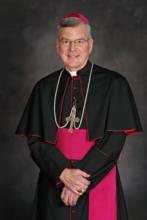
A Roman Catholic archbishop in Minnesota who had been one of the hierarchy’s most vocal opponents of gay rights is the target of an investigation into allegations that he had a series of sexual relationships with priests, seminarians, and other men.
The investigation of Twin Cities Archbishop John Nienstedt is being conducted by a prominent Minneapolis law firm hired by the archdiocese after church officials received an allegation against Nienstedt.
The archdiocese confirmed the investigation, which was first reported by Commonweal, a Catholic magazine based in New York.

A QUESTION ASKED of me 100 times in the last 10 years: Why do you stay in the Catholic Church? How can you stay in a church where thousands of children were raped around the world? Where men in power covered their ears to the screams of children and moved the rapists around from parish to parish so that smiling welcoming parents presented their awed shy children to the rapists like fresh meat? Where women have been marginalized and sidelined for centuries and their incredible creativity diluted and wasted and left to rot? Where power and greed and cowardice so often trumped the very humility and mercy and defiant belief in the primacy of love on which the church was founded and for which it claims to stand today?
Because, I said haltingly, in the beginning, when I was unsure of my honest answer in the face of such rapacious crime and breathtaking lies, because, because ... because how could I quit now? What sort of rat leaves the ship when it is foundering and your fellow passengers need help? Why would I quit now, of all the times to quit? How could I leave the ship in the hands of the men who nearly sank her? How could I abandon the brave honest mothers and priests and nuns and teachers and bishops and dads and monks and children who are the church, who compose the church, who sing the deepest holiest song of the real church?
Because, I said more and more energetically as the years went by, because there are men like my archbishop in my church, men who stood up to lies and crime and accepted the lash of public insult without a word, though the sins were not theirs.
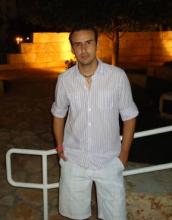
A new report on the “Shifting Religious Identity of Latinos” reads very much like a biography of Fernando Alcantar.
But once he moved to California after high school, his faith journey diverged — and derailed. Today, Alcantar, 36 calls himself a humanist.
The Pew survey report released Wednesday is subtitled: “Nearly One in Four Latinos are former Catholics.” And Alcantar is one of them.
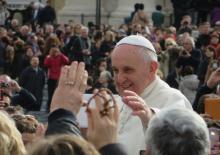
Pope Francis likes to say that he prefers to raise questions rather than issue edicts or change doctrine, and he has certainly generated plenty of debate with his off-the-cuff remarks about gays and his cold-call chats on topics like divorce and Communion, as happened recently with a woman in Argentina.
Now a recent conversation between the pope and a bishop from Brazil about the priest shortage may be moving the issue of married clergy onto the pontiff’s agenda.
During the meeting, Krautler and Francis compared notes on how much the priest shortage affects the church, especially in the Southern Hemisphere. Krautler’s diocese, geographically the largest in Brazil, has just 27 priests for 700,000 Catholics, most of whom might attend Mass a couple of times a year.

So what’s it like to come to work every day when your boss is the pope?
Much also depends on whether you are one of the approximately 3,500 (mostly Italian) lay people in the Vatican’s workforce or one of the 1,100 or so cardinals, bishops, priests, or religious brothers and sisters who tend to occupy decision-making positions and are deeply invested in the policies that Francis adopts.
That second group, often defined by their ideologies and rivalries, tends to draw the most attention, given the high stakes and fierce passions involved.

Cardinal Timothy Dolan said Sunday that Pope Francis is asking the Catholic Church to look at the possibility of recognizing civil unions for gay couples, although the archbishop of New York said that he would be “uncomfortable” if the church embraced that position.
Francis said the churches in various countries must account for those reasons when formulating public policy positions. “We must consider different cases and evaluate each particular case,” he said.

As Pope Francis approaches the one-year mark of his papacy, his global flock and a fascinated public are starting to measure the changes he is making against the sky-high hopes for transforming an institution many thought impervious to change.
Every personnel move and every new proposal is being scrutinized for what it might indicate about the direction of the church, what it might augur about possible adjustments to church teaching and whether the aspirations of so many will be fulfilled — or frustrated.
But as important as such structural and policy moves can be, church leaders and Vatican insiders say the 77-year-old Francis is really focused on a more ambitious (and perhaps more difficult) goal: overhauling and upending the institutional culture of Catholicism.
Francis, they say, is bent on converting the church, as it were, so that the faith is positioned to flourish in the future no matter who follows him to the throne of St. Peter.
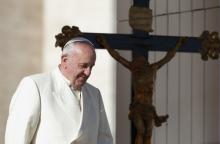
High-level debates over Catholic teachings on marriage and divorce and other hot-button issues heated up on Wednesday as a highly anticipated effort to overhaul the Vatican bureaucracy slogged through the devilish details of financial reform.
The multitrack talks launched months ago by Pope Francis ramped up this week as some 185 cardinals converged on Rome to watch the pontiff add 19 new members to their select ranks this weekend, part of what some called “the most critical week” of Francis’ year-old papacy.
Anticipation is mounting for a series of closed-door discussions on Thursday and Friday, when the cardinals will hold what are expected to be frank talks about issues such as contraception, cohabitation, gay marriage, and whether divorced and remarried Catholics can receive Communion.

No doubt about it, Pope Francis is generating the kind of Internet buzz and sky-high Q Scores that brand managers can only dream of. But is the pontiff becoming a victim of his own good press?
The Vatican once again had to dispel media reports that went well beyond what Francis actually said, as his spokesman formally denied that the pope had signaled an openness to same-sex unions in a recently published conversation with leaders of religious orders.
During the November discussion with leaders of the Jesuits, Franciscans and others, Francis said they needed to engage “complex” situations of modern life, such as the prevalence of broken homes and the growth in gay couples rearing children.
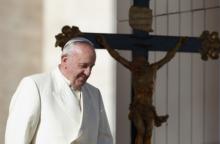
As part of Pope Francis’ pastoral reforms, all 44 senior members of the Roman Curia, or governing body, must take turns hearing confession at a church near the Vatican.
There is even speculation that Francis himself could hear confessions at the Church of the Santo Spirito in Sassia, just outside the Vatican walls, where his bishops and cardinals have been directed to perform the sacrament of penance and reconciliation.
“I think it’s likely the pope will discreetly hear confessions at some point,” said Giacomo Galeazzi, a veteran Vatican watcher from Italy’s La Stampa newspaper. “The pope has long been an advocate of the pastoral aspects of the ministry and now the Curia will as well.”
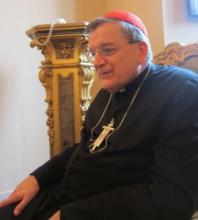
In private conversations, Pope Francis often acknowledges that reforming the Vatican will be a difficult task opposed by powerful interests in the church. Developments on Monday showed both the progress he has made and the challenges that remain.
Case in point: Cardinal Raymond Burke, an influential American conservative who has worked in the Roman Curia since 2008, lost one key post on Monday when he was left off the Vatican body that vets bishops for the pope to appoint. Those appointments are seen as the key to securing Francis’ legacy.
But in an interview a few days earlier, Burke — who remains head of the Vatican equivalent of the Supreme Court — also publicly raised doubts about Francis’ plans to make wholesale changes in a papal bureaucracy in keeping with the pontiff’s vision of a more open, pastoral church.

At the heart of the Vatican’s new “Metamorphosis of Space” exhibit featuring the works of Spanish architect and artist Santiago Calatrava is the first-ever public display for the model of New York’s St. Nicholas Greek Orthodox Church.
The exhibit’s curator, Micol Forti, said the relationship between the project and the Vatican is casual — “It’s not even a Catholic Church,” she said of St. Nicholas — yet the magnetism of the model is immediately apparent.
“This exhibit is part of a dialogue with contemporary culture, and this particular piece is a large part of it,” Forti said. She pointed out an adjacent series of watercolor paintings Calatrava made to show a kind of evolution between the design of the church and a classic portrait of the Madonna and Child.
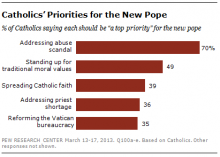
Pope Francis is creating a special commission to deal with the clergy sexual abuse crisis on a global scale, a step that comes amid growing criticism that Francis had not given sufficient attention to the scandal.
Boston Cardinal Sean O’Malley made the announcement on Thursday in the Vatican where he was meeting this week with Francis and the other members of the so-called “Gang of Eight” cardinals that the pope chose to help him reform the Roman Curia.
O’Malley, who is the U.S. bishop with perhaps the most credibility on the abuse issue, listed a range of programmatic ideas for the commission, whose members are expected to include lay people, mental health professionals, and other experts in the field as well as leading churchmen.
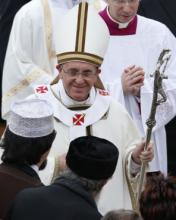
Laying out a blueprint for the issues that are likely to define his papacy, Pope Francis on Tuesday issued a biting critique of capitalism, calling on world leaders to fight against poverty and for the rich to share their wealth, and urging the media to adjust its priorities.
“How can it be that it is not a news item when an elderly homeless person dies of exposure, but it is news when the stock market loses two points?” Francis asked in an 84-page “apostolic exhortation” that is widely seen as a road map for his papacy akin to a presidential State of the Union address.
“How can we continue to stand by when food is thrown away while people are starving?” he asked. “Today, everything comes under the laws of competition and the survival of the fittest, where the powerful feed upon the powerless. As a consequence, masses of people find themselves excluded and marginalized: without possibilities, without any means of escape.”

First, the name “Francesco” leapfrogged to No. 1 on the list of the most popular baby names in Italy.
Then, the city of Rome reported a tourism boom, mostly from Latin America.
Now, there’s word Roman Catholic Church attendance is climbing throughout Italy.
Blame it on “the Francis effect.”
Italy’s Center for Studies on New Religions reported Sunday that around half of the 250 priests it surveyed reported a significant rise in church attendance since Cardinal Jorge Mario Bergoglio became Pope Francis in March.
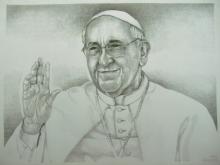
When the nation’s Catholic bishops gather on Monday for their annual fall meeting in Baltimore, one of their chief duties will be choosing a new slate of leaders to guide the American hierarchy for the next three years.
But the more than 200 prelates will also be looking over their heads — and maybe their shoulders — to the Vatican to gauge what Pope Francis’ dramatic new approach means for their future.
If Francis has made one thing clear in his nearly nine months on the job, it is that he wants the church to radically change its tone and style, starting at the top. The pontiff has repeatedly blasted careerism among churchmen and ripped “airport bishops” who spend more time jetting around the globe — and to Rome — rather than being pastors who go out to their flock and come back “smelling of the sheep,” as he likes to put it.
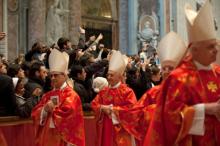
The Vatican on Monday moved to quash speculation that at least two women would be among the cardinals that Pope Francis will name in February, saying such a move was “not a realistic possibility.”
Over the weekend, Irish media reported that Francis could name Linda Hogan and Mary McAleese as cardinals. Both are associated with Trinity College in Dublin: Hogan as a professor of ecumenism, and McAleese, the former president of Ireland, as a former professor.
Some Italian media that carried the story speculated that Cecile Kyenge, the Congo-born Italian minister of integration, could be a candidate as well. Kyenge is a devout Catholic and a graduate of the Catholic University of the Sacred Heart in Milan.

At a speech in St. Peter's Square, Pope Francis was joined on stage by an incredibly cute young boy.
As NPR reports:
Protocol is a concept that's often lost on young children and this boy – part of a group of children invited to sit near the pontiff during a speech — didn't see any reason why he shouldn't hang out for a bit with the guy in white.
The Telegraph provides a video and this quote:
The unidentified boy refused to leave the Pope's side, clinging to his legs while two Cardinals tried to encourage him to sit back down with sweets.
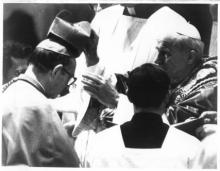
The election of Pope Francis in March heralded a season of surprises for the Catholic Church, but perhaps none so unexpected – and unsettling for conservatives – as the re-emergence of the late Chicago Cardinal Joseph Bernardin as a model for the American Catholic future.
While there is no indication that Francis knows the writings of Bernardin, who died in 1996, many say the pope’s remarks repeatedly evoke Bernardin’s signature teachings on the “consistent ethic of life” – the view that church doctrine champions the poor and vulnerable from womb to tomb – and on finding “common ground” to heal divisions in the church.

The rite of baptism got big press as Archbishop of Canterbury Justin Welby christened Prince George, a future king of England on Wednesday.
Welby made it a teachable moment for a country where only one in six are baptized. In a YouTube video, he explains that by bringing their son forward for baptism, Prince William and Duchess Catherine are “bringing God into the middle of it all.”
Last month, Pope Francis gave the sacrament a boost when he called a pregnant, unmarried woman to encourage her faith and offered to baptize her baby. While his main message was anti-abortion, his call also reminded Catholics that children of unmarried parents are welcome in the church.